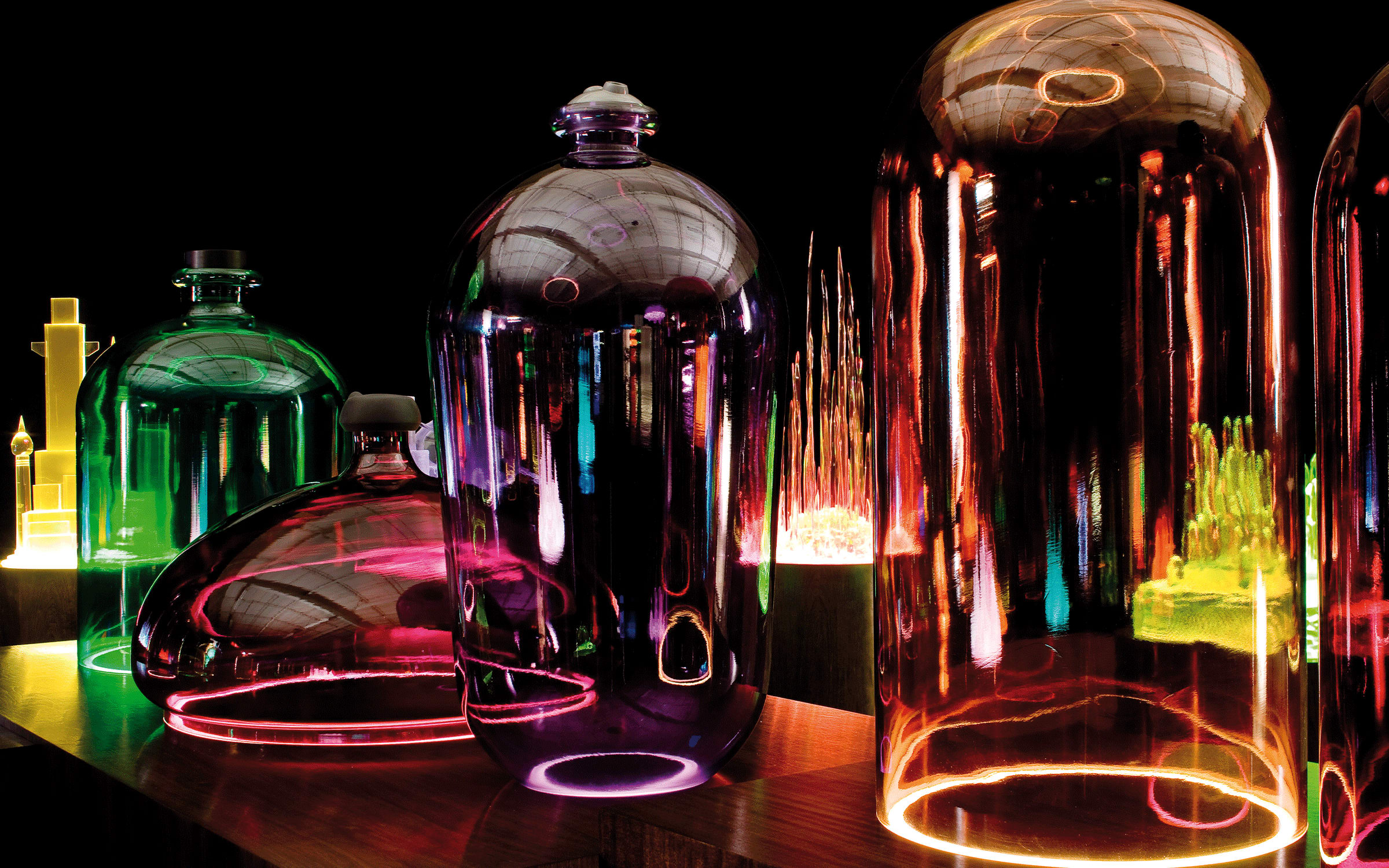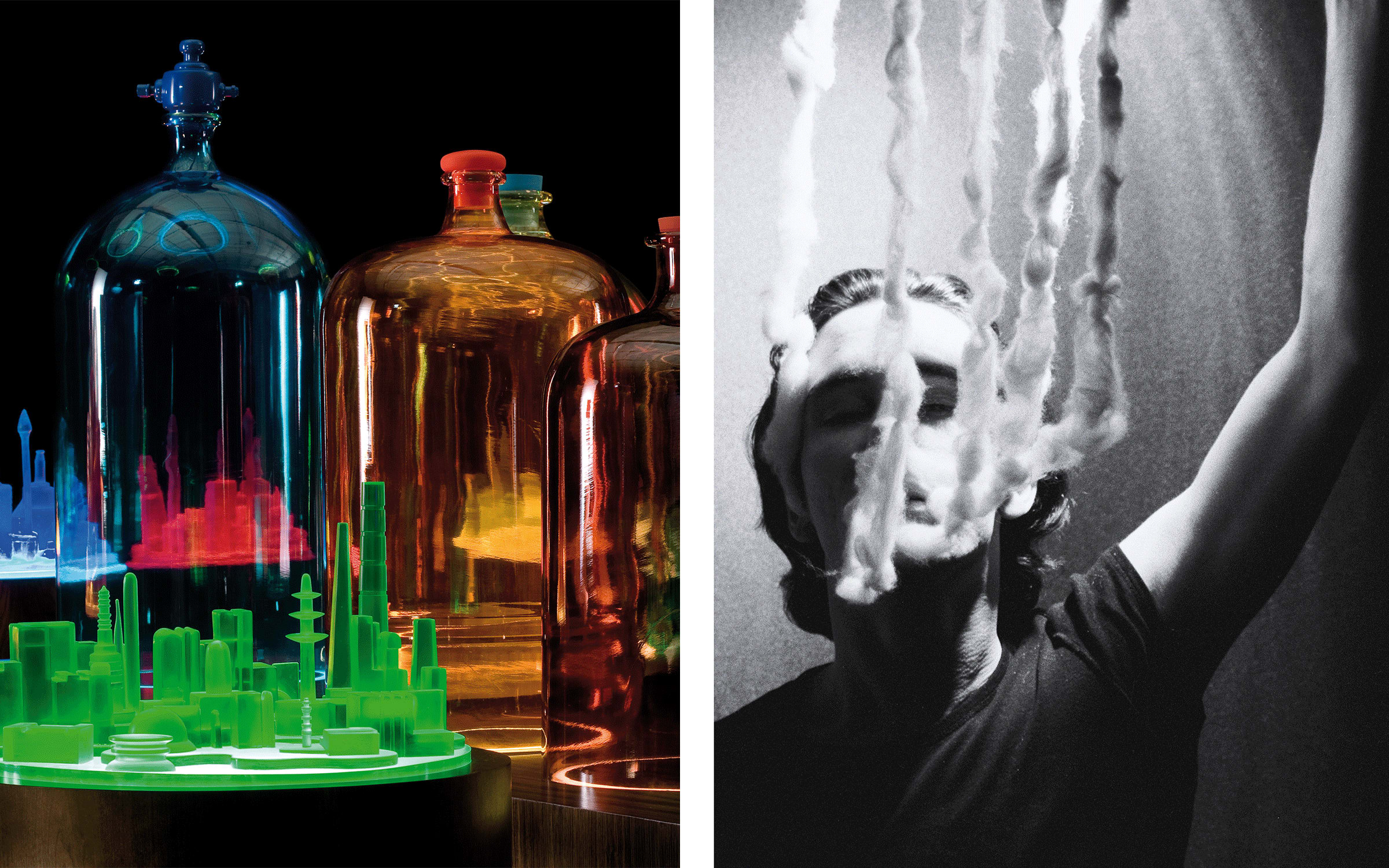I have always had a soft spot for art that appeals to a love of food. Most often, it is painting that presents the pleasures of mouthwatering cuisines. When I first discovered Mike Kelley’s Kandor series in 2009 as part of ‘Mapping the Studio’, the two venue show in Venice at Punta della Dogana and Palazzo Grassi, and at Galerie Hussenot in Paris the same year, I remember being unsettled – these objects were at once tantalizing and cold, like suspicious-looking sweets. Was I influenced by the large bell jars, which evoked a candy shop window or an amusement park souvenir stand, where the most beautiful, outsized sweets would remain forever out of reach?

It took the American artist several years to work out the recipe, find the materials, the textures, the right transparency, and the right colors to achieve the desired effect. It all began in 1999, when Kelley embarked on one of his most ambitious cycles, based on the mythical city of Kandor, on Superman’s home planet of Krypton, according to the lore of the comic book created in the 1930s. Kelley’s first projects were simultaneously virtual and real: He wanted to devise a collective creation with the thousands of fans comprising the Superman community that the Internet, still in its infancy, could bring together. The idea gradually evolved into several works and series, culminating in a spectacular ensemble of model cities in colored resin and their accompanying bell jars – Kandors Full Set (2005–2009), now housed in the Pinault Collection.
What interested Kelley was the appearance of this city that was so peripheral to the Superman stories that the comic book artists never bothered to codify it. It thus took on a different aspect from one issue to the next. The only constant was a futuristic science fiction aesthetic of an urban location imagined by mid-20th century artists often heavily influenced by Art Deco. ‘Kandor is an image of a time that never was – the utopian city of the future that never came to be,’ wrote the artist in the text associated with the video Superman Recites Selections from ‘The Bell Jar’ and Other Works by Sylvia Plath (1999).
Fascinated by the mechanisms of memory and enamored with metaphors, Kelley saw in the city’s changing appearance the sign of a faltering memory, revealing the melancholy of a superhero, the underside of a myth. Indeed, Superman, who had been sent to Earth by his father when he was just a baby, could not return to his home planet, which had been destroyed. His only reminder of that past is a bell jar containing the city, miniaturized by the villain Brainiac – a constant reminder of his inescapable uprootedness.

In fact, in the 1999 video by Kelley, an actor playing Superman meditates on alienation through the powerful words of the American writer Plath – a feminist icon who is the complete opposite of the masculinist superhero model. Memory, loss, melancholy, pop culture, and the collective imagination – it all came together to make Kandors one of the artist’s greatest achievements.
From a formal point of view, the ambition of Kandors is exceptional, too. Kelley wanted the cities to be ‘akin to paintings by Henri Matisse in three dimensions, with science fiction overtones,’ says the artist in the exhibition catalog Mike Kelley: Kandors (2010). These twenty-one miniature cities in colored resin (it is hard to tell whether they are more like ice, rock, or crystal) and the colorful shaped glass jars that sit on backlit pedestals took five years to bring to fruition. This perfectionism creates a sense of wonder – the works are alluring but also icy, emanating a suggestion of oblivion, with the cities seemingly disconnected from their protective cloches.
When I discovered these works in 2009, they seemed so far removed from the Mike Kelley people spoke of as punk and crude. This is one of the motivating forces behind this new retrospective at the Bourse de Commerce – Pinault Collection: to display the breadth, astonishing coherence, and complexity of the work of an artist who played a major role in defining what we now regard as contemporary art.
Jean-Marie Gallais is a curator at the Collection Pinault.
Mike Kelley
‘Ghost and Spirit’
Bourse de Commerce - Pinault Collection, Paris
October 13, 2023 to February 19, 2024
The exhibition is organized by Tate Modern, London in collaboration with Pinault Collection, Paris, K21 – Kunstsammlung Nordrhein-Westfalen, Düsseldorf, and Moderna Museet, Stockholm.
English translation: Jacob Bromberg.
Caption for all images besides portrait: Mike Kelley, Kandors Full Set (details), 2005-2009. Photograph by Fredrik Nilsen. Pinault Collection. © Mike Kelley Foundation for the Arts. All rights reserved. © Adagp, Paris, 2023.
Published on October 10, 2023.